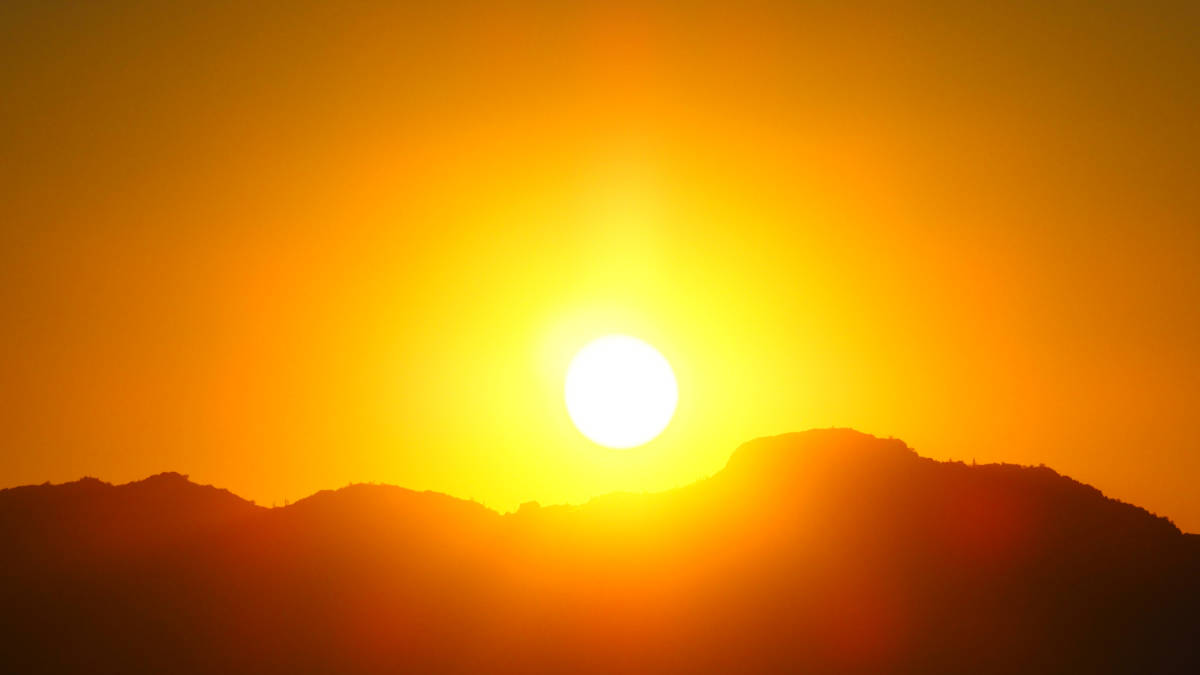Resource Rising Stars Summer Series is back and these four energy stocks are on the agenda

The Summer Series will take place in two cities – Sydney (14 November) and Melbourne (16 November). Pic via Getty Images.
- The Resources Rising Stars Summer Series conference is back in Sydney on 14 November and Melbourne on 16 November
- Compelling line-up of companies – including several energy plays – to deliver presentations and speak to investors
- Greenvale to present on its Alpha Torbanite oil shale project, geothermal project, and EP 145 gas, natural hydrogen and helium permit
- 92 Energy to share insights about its high-grade Gemini uranium discovery and other projects in the Athabasca basin
The Resources Rising Stars Summer Series returns this November with one-day conferences on 14 November at the Four Seasons Hotel in Sydney and on 16 November at The Ritz-Carlton in Melbourne.
It features a line-up of companies offering outstanding exposure to the resources sector.
Investors will have the opportunity to speak directly to senior executives who can provide insights and information that will help them refine their investment decisions.
Energy in focus
This year’s Resources Rising Stars Summer Series will have a strong focus on energy, which is an increasingly topical subject.
Geopolitical tensions, which came to a head in February last year following Russia’s invasion of Ukraine, have really framed concerns about energy security.
Europe was left scrambling to secure enough gas for its needs after cutting off Russian gas supplies as part of its sanctions effort.
This sudden demand for liquefied natural gas – the only way natural gas can be transported over long distances – led to a sharp increase in gas prices across the globe, which underscored how reduced investment in oil and gas exploration and production has led to a paucity of new supply while simultaneously driving investment in renewables and storage.
Matters have certainly not been helped by the decision by OPEC+ to maintain crude oil output cuts it implemented earlier this year.
Locally, said underinvestment in natural gas is causing grief as while demand is likely to remain stable or drop marginally due to ongoing demand, supply has been diminishing for some time now with no new sources of gas being found and/or developed to make an impact.
Growing investment
Unsurprisingly, this has led to both majors and juniors scrambling to find new sources of gas in areas such as the Beetaloo Sub-basin in the Northern Territory and the Perth Basin in Western Australia.
Companies have also been pushing hard to develop alternative sources of energy such as renewables and hydrogen.
With that in mind, here are the energy companies that will be presenting at the Resources Rising Stars Summer Series.
Greenvale Energy (ASX:GRV)
Pushing hard on the theme of exploring and developing alternative sources of energy is Greenvale Energy, which has been focused on developing its Alpha Torbanite project in Queensland – the only known deposit of its kind in Australia.
Torbanite is a type of oil shale contained within cannel coal that is distinguished by its high-grade hydrocarbon content – up to 650l per tonne, allowing for the production of high-value bitumen, light crude oil and activated carbon.
Cannel coal itself is a type of bituminous coal that is also classified as terrestrial type oil shale.
Certainly, this is enough for the company to estimate that it can produce some 21.9 million barrels of synthetic oil equivalent by mining the current inferred resource of 18.6Mt and processing the resulting torbanite and cannel coal.
Greenvale is also pursuing the use of geothermal power generation using CeraPhiWell down-hole heat exchanger technology developed by CeraPhi Energy to both generate power and offset emission from its Alpha project.
A recent study to evaluate the CeraPhiWell technology at the company’s Longreach geoethermal tenement in Queensland found that it could provide the requisite heat for powering a 4.95MWe plant.
However, CeraPhi found that geothermal exploration below a depth of 3,000m is unlikely to be economic at small scale.
As such, the two companies are currently focused on the Millungera basin, which has geothermal potential at target depths of between 2,500-3,000m and large-scale regional power requirements, which provides significant potential for offtake.
More recently, Greenvale reached an agreement to acquire 75% of a gas, helium and natural hydrogen project (EP 145) in Central Australia’s Amadeus Basin
EP 145 sits within recognised play fairways for helium and hydrogen and contains proven hydrocarbon discoveries.
It hosts an existing best estimate prospective resource of 440 billion cubic feet of natural gas, 26.4Bcf of helium and 26.4Bcf of naturally occurring hydrogen and is on trend with the producing Mereenie oil and gas field.
Natural gas and natural hydrogen, which is touted as being the cheapest source of the gas, are of course in demand for energy generation while helium is an in demand gas used in semiconductor manufacturing, nuclear energy production, solar panels, optic fibre and the cooling of superconducting magnets in MRI scanning machines and more.
As part of the acquisition, the company will acquire seismic and drill one well before August 2025, which will test the field for its ability to flow all three gases.
Gold Hydrogen (ASX:GHY)
Also chasing natural hydrogen and helium is Gold Hydrogen, which holds the Ramsay project in South Australia’s Gawler craton and is already seeing some early success.
Its first well, Ramsay-1 was drilled to a depth of 1,005m on time and on budget.
Importantly, it encountered significant concentrations of natural hydrogen and helium, confirming historical measurements and demonstrating that an active system is present in the Ramsay project area.
Testing and laboratory results measured air-corrected hydrogen at 73.3% at 240m below ground level, consistent with the 76% air-corrected concentration of hydrogen reported in the Ramsay Oil Bore 1 in 1931.
Helium was also detected with an air-corrected content of 3.6% at a depth of 892m, which represents a significant value-add given the high value of helium.
Gold Hydrogen is currently preparing to drill the Ramsay-2 well in mid-November to further appraise the best estimate prospective resource of 1.3Mt of hydrogen.
Triangle Energy (ASX:TEG)
Long the operator of the Cliff Head oil field in the offshore Perth Basin, Triangle is pivoting away from that legacy – if still producing – project to focus on gas and oil exploration in the North Perth basin.
The Perth Basin has seen a revival since the 2014 discovery of the Waitsia gas field by AWE and Origin Energy, which found and produced large quantities of gas in the target Kingia and High Cliff sandstones.
This was followed by Strike Energy and Warrego Energy’s discovery of the West Erregulla gas field that de-risked the Kingia and High Cliff sandstones by proving that Waitsia wasn’t a one-off discovery.
Given these and other recent successes, Triangle is certain that its L7 and EP436 permits hosts potential for both oil (in shallower reservoirs) and gas in the deeper Kingia and High Cliff sandstones.
Already the company and its joint venture partners Talon Energy and New Zealand Oil and Gas have ordered the casing and well heads for the upcoming wells.
Booth-1 is targeting a prospective gas resource of 113 billion cubic feet (Bcf) to 540Bcf with a mid-case of 279Bcf while the Becos well is targeting between 1 million barrels (MMbbl) and 21MMbbl of oil with a mid-case of 5MMbbl.
Separately, the company has formed bid groups to secure licences with discovered gas in the North Sea under the UK’s 33rd offshore licence round.
92 Energy (ASX:92E)
From fossil fuels and hydrogen to unleashing the power of the atom, 92 Energy is focused on unlocking the potential of its 10 uranium projects – including the high-grade Gemini discovery – in Canada’s Athabasca basin.
The Athabasca is home to the highest grade uranium deposits in the world with grades that can be more than 100 times higher than elsewhere in the world.
Contracting of the energy metal has accelerated this year with over 140Mlbs contracted to date, leading to spot prices rising from US$54/lb to over US$70/lb in the last month.
This is due to 10 years of underinvestment in uranium exploration and development, supply side issues and ongoing concerns about energy security leading to the restarting of nuclear reactors in Japan and several countries planning to build new plants.
A good time then for 92 Energy to have consistent thick intercepts – topping up at 43m at 0.62% U3O8 including 6m at 2.17% U3O8 – from drilling at the Gemini discovery.
Fantastic results that are made better by Gemini remaining open and a parallel structure with numerous analogies to the Gemini mineralised zone (GMZ) identified 300m to the east.
The GMZ also exhibits structural similarities to Rabbit Lake – the longest running uranium mine that produced over 203 million pounds of uranium concentrate over 41 years, which is another point in its favour.
The Resources Rising Stars Summer Series will be on in Sydney (14 November) and Melbourne (16 November).
Attendance is free, but registration is essential.
Visit www.resourcesrisingstars.com.au to sign up for the event, or find details on how to watch the presentations online.
At Stockhead we tell it like it is. While Greenvale Energy is a Stockhead advertiser, it did not sponsor this article.

SUBSCRIBE
Get the latest breaking news and stocks straight to your inbox.
It's free. Unsubscribe whenever you want.
By proceeding, you confirm you understand that we handle personal information in accordance with our Privacy Policy.








